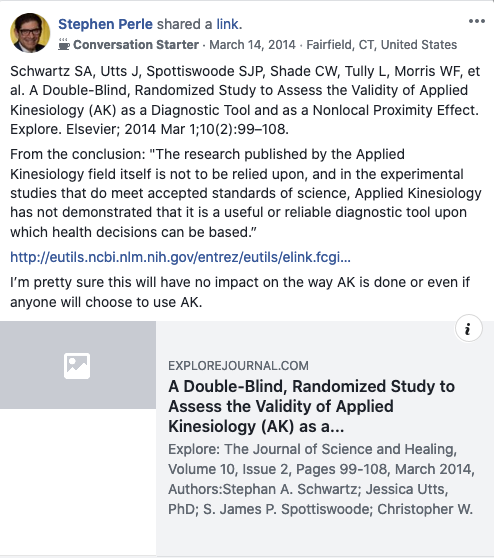A Double-Blind, Randomized Study to Assess the Validity of Applied Kinesiology (AK) as a Diagnostic Tool and as a Nonlocal Proximity Effect The data in this study, particularly when seen in the larger context of a review of the literature from the AK field itself by Klinkoski and Leboeuf (1990), which considered 50 papers published between 1981 and 1987 by the International College of Applied Kinesiology, and the survey by Hall, Lewith, Brien, and Little (2008), using standard evaluation criteria [quality assessment tool for studies of diagnostic accuracy included in systematic reviews (QUADAS), Standards for Reporting of Diagnostic Studies (STARD), JADAD, and Consolidated Standards of Reporting Trials (CONSORT)], for research methodology, as well as six prior non-clinical studies by Radin (1984), Quintanar and Hill (1988), Braud (1989), Arnett et al. (1999), Ludtke (2001), and Kendler and Keating (2003), all together suggest the following: The research published by the Applied Kinesiology field itself is not to be relied upon, and in the experimental studies that do meet accepted standards of science, Applied Kinesiology has not demonstrated that it is a useful or reliable diagnostic tool upon which health decisions can be based.

#science #chiropractor #chiropractic #research #education #evidence based #patient centered #interprofessional #collaborative #rehabilitation #public health #spinal health #musculoskeletal health #ethics #pain #function #disability #QOL #knowledgetranslation


